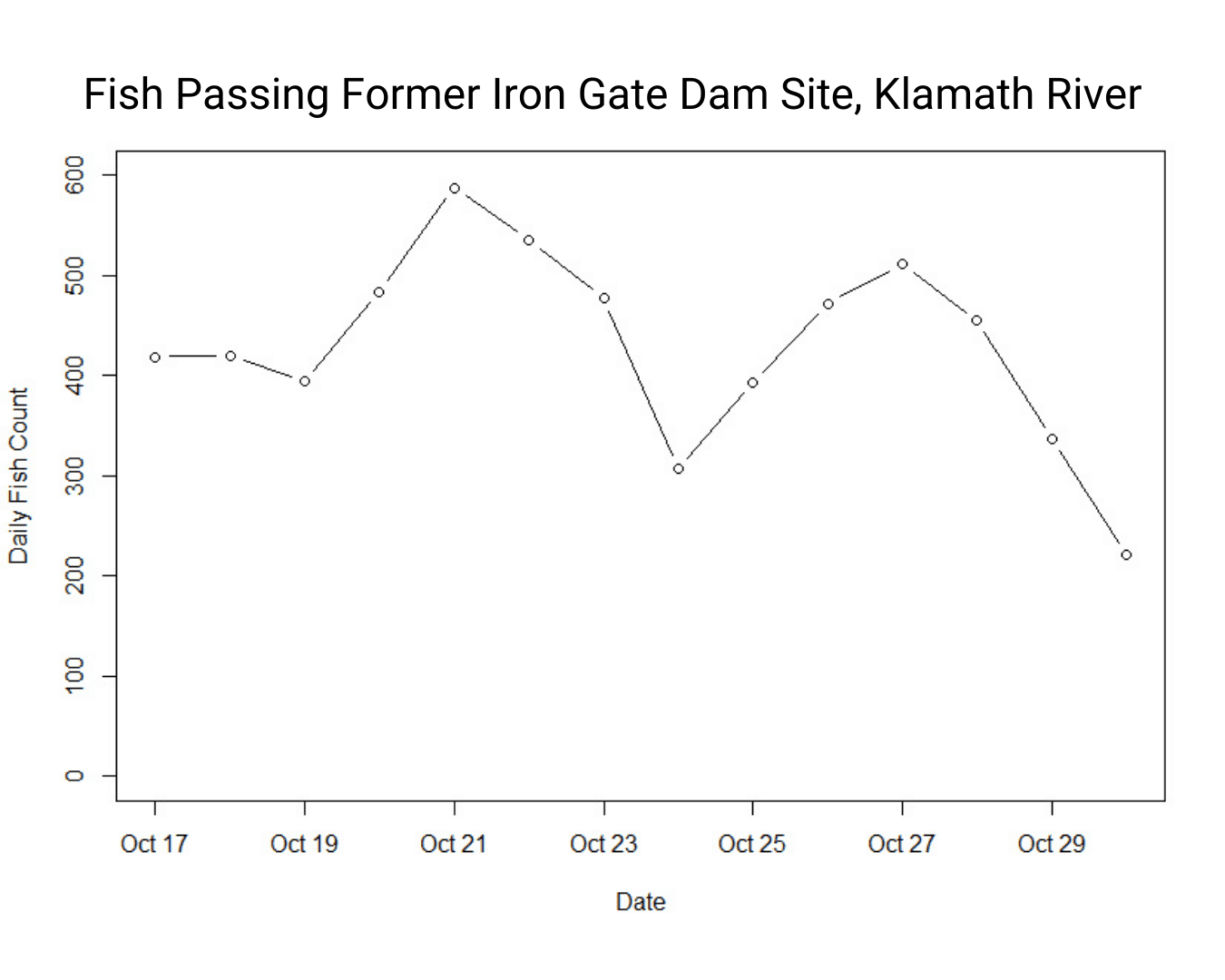The Numbers are in: Thousands of Salmon Return Home to the Klamath
Since July 2024, when CalTrout and our team of Tribal, state, federal, academic, and nonprofit partners launched the Klamath River Science and Monitoring Program, we’ve been hard at work collecting, processing, and analyzing data on fish migration through the former dams. The (preliminary) data is rolling in and good news – so are the fish!
From October 17 through October 29, 2024, during the fall-run Chinook salmon migration, the data suggest that more than six thousand fish have passed the former Iron Gate Dam site and migrating into the newly re-opened habitats. These fish were captured by our team’s SONAR camera which is installed at the former dam site.
How does SONAR work?
The camera uses sound waves to generate movie-like imagery of passing fish on a continuous basis. Our team of scientists analyzes the camera’s recordings considering several factors including fish size and time of movement to discern that most of these are likely Chinook salmon or steelhead! This SONAR camera provided the first evidence of fish migrating into newly reopened habitat just days after dam removal construction wrapped up. When we break down the data from October 17 to October 29 a bit further, we estimate that between 221 and 588 fish migrated through each day and 98% of these fish were greater than 20 inches long! This data is preliminary and subject to change.

How else are we collecting data on the returning fish?
In addition to SONAR imaging, the monitoring program employs methods including netting, radio telemetry, and spawner surveys. Netting documents fish species assemblages (variety and abundance of a fish species in a specific area), age, length, and genetic information and allow the team to attach tags to fish. Radio telemetry helps track fish migration into the 400 miles of newly re-opened habitat. Spawner surveys provide information on fish nesting locations. Together, these methods follow the fish to uncover how they are responding to dam removal and inform how to focus future restoration efforts.
On October 25, our team tagged their first Chinook salmon and steelhead followed by the first coho salmon on December 4 marking another set of incredible milestones in this groundbreaking river restoration story as we continue to unravel the impacts of dam removal. Our network of radio and PIT receivers stands ready upstream, waiting to detect these magnificent fish as they journey into ancestral waters. This decades-long restoration project is proof that nature can heal once returned to its natural state. We are so excited to leverage the momentum and continue driving essential dam removal projects across California!
The project team consists of dedicated individuals representing the Karuk Tribe, Klamath Tribes, Yurok Tribe, Ridges to Riffles, California Department of Fish and Wildlife, Oregon Department of Fish and Wildlife, NOAA Fisheries, Bureau of Reclamation, U.S. Fish and Wildlife Service, Cal Poly Humboldt, U.C. Davis, U.S. Geological Survey, Keith Denton and Associates, Resource Environmental Solutions, and CalTrout. The monitoring program is funded by Humboldt Area and Wild Rivers Community Foundation, Bella Vista Foundation, Bureau of Reclamation, U.S. Fish and Wildlife Service, and NOAA Fisheries.
Watch our video to learn more about the Klamath River Science and Monitoring Program and to hear from partners involved!
Listen to our latest podcast episode to hear behind the scenes stories from the Klamath!




Cover Photo Credit: Chinook salmon by Michael Wier





